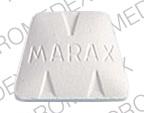Ephedrine/hydroxyzine/theophylline Interactions
There are 870 drugs known to interact with ephedrine/hydroxyzine/theophylline, along with 21 disease interactions, and 3 alcohol/food interactions. Of the total drug interactions, 155 are major, 689 are moderate, and 26 are minor.
- View all 870 medications that may interact with ephedrine/hydroxyzine/theophylline
- View ephedrine/hydroxyzine/theophylline alcohol/food interactions (3)
- View ephedrine/hydroxyzine/theophylline disease interactions (21)
Most frequently checked interactions
View interaction reports for ephedrine / hydroxyzine / theophylline and the medicines listed below.
- Adderall (amphetamine / dextroamphetamine)
- Advair Diskus (fluticasone / salmeterol)
- Ambien (zolpidem)
- Astelin (azelastine nasal)
- Ativan (lorazepam)
- Benadryl (diphenhydramine)
- Celexa (citalopram)
- Claritin (loratadine)
- Crestor (rosuvastatin)
- Cymbalta (duloxetine)
- Effexor XR (venlafaxine)
- Eliquis (apixaban)
- Fioricet (acetaminophen / butalbital / caffeine)
- Flexeril (cyclobenzaprine)
- Flonase (fluticasone nasal)
- Iron Sulfate (ferrous sulfate)
- Klonopin (clonazepam)
- Lexapro (escitalopram)
- Lyrica (pregabalin)
- Metoprolol Succinate ER (metoprolol)
- Morphine Sulfate ER (morphine)
- Neurontin (gabapentin)
- Ozempic (semaglutide)
- Seroquel (quetiapine)
- Suboxone (buprenorphine / naloxone)
- Ventolin HFA (albuterol)
- Vitamin D3 (cholecalciferol)
- Vyvanse (lisdexamfetamine)
- Xanax (alprazolam)
- Zoloft (sertraline)
Ephedrine/hydroxyzine/theophylline alcohol/food interactions
There are 3 alcohol/food interactions with ephedrine / hydroxyzine / theophylline.
Ephedrine/hydroxyzine/theophylline disease interactions
There are 21 disease interactions with ephedrine / hydroxyzine / theophylline which include:
- depression
- QT prolongation
- PUD
- renal dysfunction
- seizure disorders
- cardiovascular disease
- anticholinergic effects
- asthma/COPD
- cardiovascular
- renal/liver disease
- glaucoma
- liver disease
- renal/liver disease
- BPH
- diabetes
- GERD
- hemodialysis
- reduced clearance
- tachyarrhythmias
- BPH
- diabetes
Drug Interaction Classification
| Highly clinically significant. Avoid combinations; the risk of the interaction outweighs the benefit. | |
| Moderately clinically significant. Usually avoid combinations; use it only under special circumstances. | |
| Minimally clinically significant. Minimize risk; assess risk and consider an alternative drug, take steps to circumvent the interaction risk and/or institute a monitoring plan. | |
| No interaction information available. |
See also:
Further information
Always consult your healthcare provider to ensure the information displayed on this page applies to your personal circumstances.


